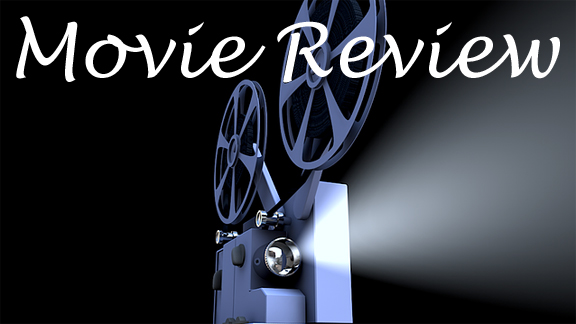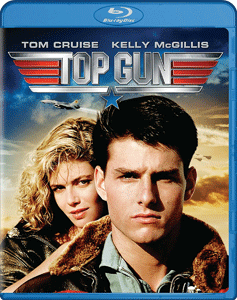“Top Gun” (1986) was a staple movie of the video-store era, the most likely film to pop up in a stack of VHS tapes your childhood buddy provided for a sleepover. As in: “They had ‘Top Gun,’ so I grabbed that too, just in case.” It’s a PG film that hints at R the same way the 2022 porn-slasher “X” is R but hints at being X. “Top Gun” is dumb but it seems smart (or smart but it seems dumb). It’s a kids’ film disguised as something for adults.
It’s a remarkably thin text – especially compared to its outsized place in pop culture. It was the top-grossing movie of ’86 by a lot, and maybe the most continually talked-about film from that year, although respectful nods must go to “Aliens” (No. 5) and “Ferris Bueller’s Day Off” (No. 9). And “Top Gun” is the codifier for a new subgenre within the action category.
That’s just the first of 10 things that stood out to me on this rewatch of “Top Gun.” Its long-awaited sequel, “Top Gun: Maverick,” is now in theaters. It will certainly have similarities to the original, but you can bet it will be a thoroughly 21st century film. Many elements of the original “Top Gun” simply can’t exist in a new movie.

“Top Gun” (1986)
Director: Tony Scott
Writers: Jim Cash, Jack Epps Jr.; Warren Skaaren (uncredited); Ehud Yonay (magazine article)
Stars: Tom Cruise, Kelly McGillis, Anthony Edwards
1. A Jerry Bruckheimer Film
Movies were a stars’ medium, then a directors’ medium, but with the rise of Bruckheimer, a large swath of action movies became a producers’ medium. “Top Gun,” directed by Tony Scott, plays like a prototype for 1998’s more muscular and more ridiculous “Armageddon,” directed by Michael Bay. Guys (it’s almost always males) who are good at what they do (pilots, deep-core drillers) do what they do in order to protect humanity (or at least America).
Other essential “Bruckheimer films” are “Crimson Tide” (directed by Scott), “Bad Boys” (Bay), “The Rock” (Bay), “Con Air” (Simon West) and “Pearl Harbor” (Bay). While some people may know the directors of these films, almost no one knows the writers.
2. Barely a plot
But if trivia buffs want to know, Jim Cash and Jack Epps Jr., who would later team on such classics as “Anaconda,” are “Top Gun’s” writers. “Batman ’89’s” Warren Skaaren added an uncredited pass. The trio worked from a magazine article by Ehud Yonay called Top Guns.

It’s remarkable how thin the plot is: Maverick (Tom Cruise) and his surrounding pilots face some MiG-28s, then they train at Top Gun school with the goal of graduating No. 1. In another testosterone-dripping film, 1993’s “Glengarry Glen Ross,” second place at least gets you a set of steak knives, but here “there are no points for second place.” Then the pilots face some more MiGs, then credits roll.
3. Short and sweet
As that plot description indicates, “Top Gun” is only 110 minutes long. That’s how movies were in the Eighties. You would think because of shrinking attention spans, 2020s films would be even shorter. But as our bladders know well, they are longer – a lot longer. I would bet $1,000 to win $20 that “Top Gun: Maverick” is longer than the original. Let me look it up. … Yep: 131 minutes.
4. The actors think they’re in a serious movie
Even though every character is known primarily by their call sign (even the instructors — Tom Skerritt is Viper and Michael Ironside is Jester) — thus indicating this is a kiddie movie, if not a silly movie – the actors play it straight across the board. The Nineties thing (perhaps pioneered by Nicolas Cage?) where actors indicate they know they’re in a goofy movie has not yet arrived with “Top Gun,” which is totally devoid of irony.
5. One character arc (OK, maybe one-and-a-half)
Maverick has the film’s only character arc. As his name indicates, he’s at his best when trusting his instincts – a tricky notion for the Navy flight instructors who recognize Maverick’s talent yet also believe in going by the book. As such, Maverick is both arrogant and plagued by self-doubt. His rival Iceman (Val Kilmer) almost gets a character arc, but it’s entirely tied to Maverick: He finds Maverick to be a dangerous liability, but then accepts Maverick when he saves the day.
That’s not to say no one else makes an impression. Everyone is sweaty throughout this film, set on a California training base and an Indian Ocean aircraft carrier. Perhaps because of the “serious acting” I mentioned above, we sense that everyone is a real person – especially Anthony Edwards’ Goose, Mavs’ comic-relief best buddy whose wife (Meg Ryan) and kid make cameos. It’s just that everything that makes them real happens off screen.
6. ‘That’s classified’
Maverick can’t get a handle on himself largely because has no closure over the death of his father, a Navy pilot killed when Maverick was an infant. At mid-film, Viper finally tells Maverick that his father died a hero, saving four squadron mates before meeting his own demise. This is classified, so if it gets out that Viper spilled the beans, his life will be ruined.
Information that’s classified because it would make the government look bad would become a central tenet of Bruckheimer films (see also Scott’s “Enemy of the State”), and other people’s blockbusters (“Independence Day”). But often it’s not for the sake of critique, but for writing convenience. In “Top Gun,” the missing knowledge allows for Maverick’s crisis of confidence, and a reason for Maverick and love interest Charlie (Kelly McGillis) to keep interacting. A corporate consultant for the Navy, Charlie wants Mav’s on-the-spot knowledge about the MiG-28 that’s otherwise sealed in classified documents.
7. A vague enemy, and mild nationalism
The MiG-28 is fictional, but MiGs in general are Russian. Still, it’s fair to say that “Top Gun” is not interested in defining the enemy. The enemy pilots hide behind black facemasks, they never speak, and their planes lack national symbols.
As stated in an opening scrawl, Top Gun is the American Navy’s elite pilot training program, so this as a nominally pro-USA picture out of the gates. Plus, Iceman says to Maverick “We’re on the same side, aren’t we?” But otherwise, there’s remarkably little nationalism or jingoism on display. This is surprising when compared to Bruckheimer’s Nineties films, and to surrounding Eighties blockbusters.
You can insert your joke here about how Rocky ended the Cold War a year earlier in “Rocky IV.” But still, flag-worshiping patriotism was common in the Reagan decade, so it’s fascinating that “Top Gun” tamps down on this sentiment.
8. The dogfights
This might be my own hang-up, but aerial dogfights never play clearly for me on screen. Even seeing “Star Wars” a hundred times, I can’t say I understand the Death Star battle’s logistics.
Same with “Top Gun,” which features briskly edited sequences comprising three distinct shots: The pilot swearing into his headset, a handful of jets swooping through the air, and the copilot/spotter furiously looking around for enemy planes (these guys must have the strongest neck muscles ever, although it seems more likely Goose would be groaning and icing his neck daily). In only a couple instances – when Maverick buzzes the tower, and when he spins out of control from an enemy’s jet wash – do I know exactly what’s happening.
9. Romance is easy (at least when you look like Cruise)
Because it consists of easily digestible chunks of celluloid, the romance between Maverick and Charlie is probably a popular essay topic for writers analyzing male-female relationships in popular films. I have a couple takeaways: One is that Maverick’s creative approach of luring Charlie with an awful rendition of the Righteous Brothers’ “You’ve Lost that Loving Feeling” doesn’t work, but also it doesn’t hurt. Showing confidence but falling on your face isn’t so bad, the film says. Second is that Maverick keeps flashing his boyish pearly white smile, and eventually Charlie gives in to the inevitable. Being good-looking helps.
Are these shallow, reductionist takes that minimize Charlie’s agency? Perhaps. But it can’t be denied that — aside from Mav’s stumble as a tunesmith — romance is easy in “Top Gun.” A relationship expert can talk all day about strategies for winning someone over, but such strategies can never be universal. When two people decide they like each other at the same time, as is the case in “Top Gun,” romance is as natural as breathing and no analysis is needed.
10. One big music video
A song will be stuck in your head after viewing “Top Gun.” It’s just a question of which one. It’ll likely be Harold Faltermeyer’s “Top Gun Anthem,” Kenny Loggins’ “Danger Zone” or Berlin’s “Take My Breath Away.” (It might be Jerry Lee Lewis’ “Great Balls of Fire,” but hopefully it won’t be the Cruise-and-Edwards-led “You’ve Lost that Loving Feeling.”) This is because “Top Gun” isn’t truly a movie; it’s actually a long, multi-pronged music video. The film doesn’t have a through-line plot, its character arcs are minimalist and forced, and its theme about the unintended consequences of classified documents is likely, well, unintended.
But as a music video, it’s a damn good one. Scott backs the anthem with silhouetted jets rolling along the aircraft carrier, guided by deck officers giving hand signals in the foreground of an orange-brown haze. Jets blast into the clouds to “Danger Zone,” which might as well have an engine’s roar among its instrumentation. “Take My Breath Away” plays over outlines of Cruise and McGillis kissing against a cool electric blue background.
And I have to mention my favorite image: Maverick sits on his motorcycle and watches planes land on the California tarmac, lit only by landing lights. The shot captures two emotional elements: 1) Maverick’s unresolved but hopeful journey toward becoming a respected pilot, and 2) the year 1986.
That’s why we remember “Top Gun” as being great even though every rewatch reminds us it’s merely good. It captures a time we love to revisit … even if we’re watching it with the click of a Roku button instead of on a rented VHS that’s due back tomorrow.

